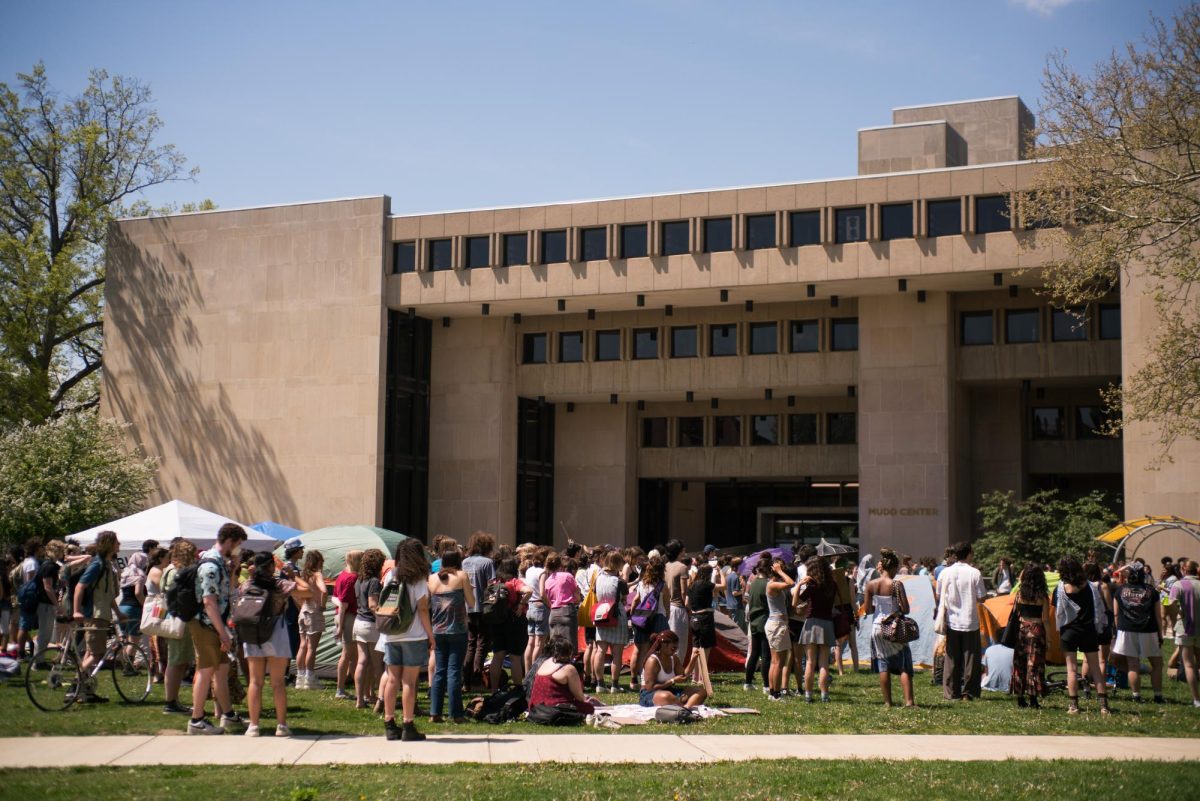Oberlin College has pledged itself to sustainability. In its efforts to be carbon neutral by 2025 it has made great environmental progress, having on-campus emissions since the first greenhouse gas inventory in 2007, according to the College’s website. The Sustainable Infrastructure Program, designed to convert the campus cooling and heating systems from a steam system to geothermal, will further advance the school toward its climate goal. But it’s hard to notice declining emissions when you walk through campus. Can more be done to directly improve students’ lives while advancing goals of sustainability?
Absolutely. And if scientists are correct, it’s something that would improve our mental well-being in a way that using renewable energy to heat our dorms never will.
The answer is killing the lawn, bringing back the bugs, and welcoming in the birds. The College can expand its sustainability goals by working on a smaller scale in its own backyard: diversifying the natural spaces on campus.
In recent years, there has been a push away from the traditional American lawn, an expansive and expensive open field of turf grass. These plots of land are completely unsustainable, guzzling water and, oftentimes, harmful chemical fertilizer, pesticides, and insecticides. They are destroyers of biodiversity. While it’s nice to have a bug-free space, they are also bird-free, butterfly-free, pollinator-free, and significantly less beautiful. According to the UC Santa Barbara Geography Department, Americans water their lawns with enough water each year to fill the Chesapeake Bay, making turf grass America’s largest irrigated crop. We also smother them in chemicals, using a total of 2.4 million metric tons of fertilizers each year to maintain our lawns.
In 2015, Oberlin College developed an Environmental Policy Implementation Plan, including a section about grounds management. According to the plan, the college had 120 acres of turf grass and 8 acres of planting beds at the time. The plan lists four strategies for minimizing inputs into the ecosystem: minimize dependence on environmentally harmful chemicals, sequester carbon, promote biodiversity by mimicking natural systems, and foster understanding and care for the natural landscape.
Although Oberlin focuses on low-intensity turf management, its excessive lawn spaces such as those in Wilder Bowl, North Quad, and Tappan Square deplete local biodiversity despite its goals to do the opposite. While we may not love to share our land with them, insects are crucial to a healthy ecosystem. They make up 80 percemt of terrestrial species on Earth, according to Penn State Huck Institute of the Life Sciences. However, this highly diverse group is in a concerning decline, posing issues for food production, pest management, and even the economy as the ecosystem services insects provide is valued at an estimated $57 billion annually. The main driver of insect population decline is habitat fragmentation and climate stress.
The more biodiverse an ecosystem is, the more climate resistant it is. A range of plant species in a space increases adaptability when faced with stresses from climate change. Varying native plants also promotes richness in the soil, making it less susceptible to pathogens, and more nutrient dense. Healthier soil and healthier plant roots have greater carbon sequestration abilities, significantly more so compared to turf lawns, directly addressing one of Oberlin’s strategies in their Environmental Policy Plan.
Beyond being environmentally beneficial, diverse native plantings pose direct benefits to the people that inhabit the space. According to a study conducted by researchers at King’s College London, mental well-being and biodiversity have been shown to be positively correlated. Mental well-being includes feelings of happiness, confidence, connectedness, relaxation, and energy levels. In response to these findings, the authors of the study recommend moving away from “heavily curated monocultural pockets and parks of mown grass… toward polycultural spaces which mimic the biodiversity of natural ecosystems.”
On a simpler level, increased diversity in natural spaces supplies more color and beauty to an outdoor space, making it more inviting and enjoyable to be in. My first year at Oberlin, I lived in Kahn Hall, the “sustainable hall.” Upon arrival on move-in day, I was surprised and disappointed to see the sleek brick building surrounded by sparse turf grass. A few young trees dot the lawn, and to the side there is a bioretention basin, an important water management feature that filters street runoff through biodiverse plantings. While that is a nod to Oberlin’s goal of sustainability, it is a drop in the bucket of what could be, and should be, done.
Transforming Oberlin’s open space would be a resource consuming project, but once developed, native spaces are low-maintenance. If done correctly, these areas would mimic natural ecosystems that are self-sustaining through natural pollination and increased soil health. The initial effort will absolutely be worth the result, as we will see campus teeming with not just a happier student population, but also natural life of all kinds.
To keep true to its commitment to sustainability, Oberlin needs to increase diverse natural life around campus by planting a wide range of native species. While I value grass spaces to lounge on outside as much as the next Oberlin student, I also recognize the harm that our various lawns pose to the local ecosystems. With the expanse of Oberlin’s campus, enough open green spaces can be preserved for recreation while fostering a healthy and flourishing environment. Sustainability starts at home.











